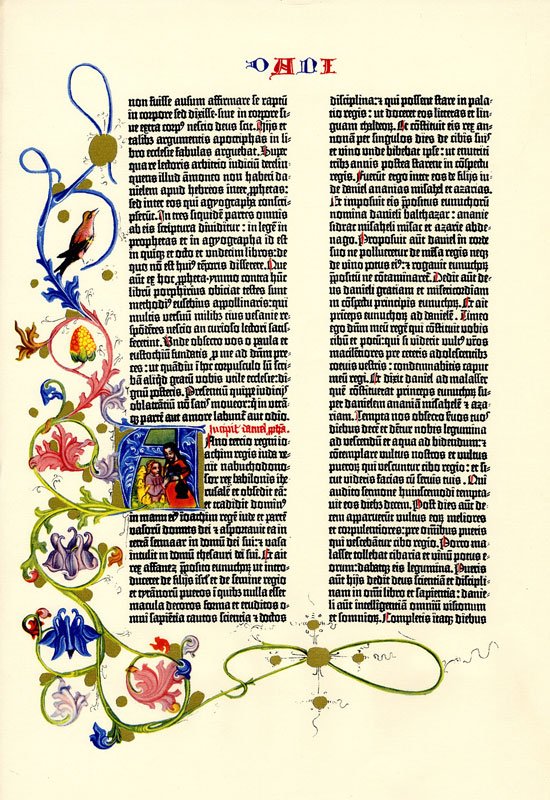Return to: Ancient Biblical Manuscripts

Johannes Gutenberg (1400 – 1468) was a German inventor, goldsmith, printer, and publisher who introduced printing to Europe with the printing press. His major work, the Gutenberg Bible was the first printed version of the Bible and has been acclaimed for its high aesthetic and quality.
Johannes Gutenberg’s introduction of mechanical movable type printing to Europe started the Printing Revolution. The arrival of mechanical movable type printing introduced the era of mass communication, which permanently altered the structure of society.
The Gutenberg Bible, published in the 1454-55, is valued for its aesthetic and artistic qualities, as well as its historical significance. Only forty-nine copies have survived and are among the world’s most valuable books. Less than 185 copies were printed with about three-quarters on paper and the others on vellum.
Most Gutenberg Bibles were sold to monasteries, universities, and wealthy individuals. The Bible seems to have sold out immediately, with a price of at least three years’ wages for a clerk. Although this made them significantly cheaper than manuscript Bibles, most people of ordinary income wouldn’t have been able to afford them.
The Gutenberg Bible had a profound effect on the history of the printed book and influenced future editions of the Bible. Of the 49 Gutenberg Bibles known to exist today, only 23 are complete. Others have pages or whole volumes missing. Twelve copies on vellum are known to survive, although only four of these are complete. Today, few copies remain in religious institutions, with most now owned by universities, libraries, and other major academic institutions. The first Gutenberg Bible reached North America in 1847 and is now in the New York Public Library.

The Gutenberg printing press
Around 1450, Johannes Gutenberg introduced the first movable type printing system in Europe. He advanced innovations in casting the type. He introduced adaptations to the screw-press, the use of an oil-based ink, and the creation of a softer and more absorbent paper. Gutenberg was the first to create his type pieces from an alloy that is still used today.
Compared to woodblock printing, movable type page setting and print using a press was faster and more durable. Also, the metal type pieces were sturdier and the lettering more uniform, leading to typography and fonts.
The high quality and relatively low price of the Gutenberg Bible established the superiority of movable type for Western languages. The printing press rapidly spread across Europe, and the “Gutenberg Revolution” played a crucial role in the development of the Renaissance, the Reformation, the Age of Enlightenment, and the scientific revolution.
Return to: Ancient Biblical Manuscripts
